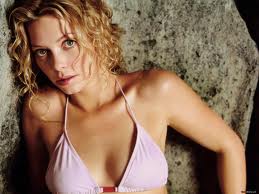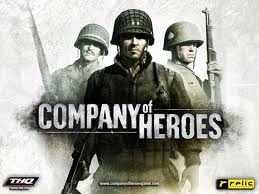Not exactly related to the CS, I know...but in a roundabout way?
5 posts
• Page 1 of 1
Newbie texture question
Not exactly related to the CS, I know...but in a roundabout way?
-

Nicholas - Posts: 3454
- Joined: Wed Jul 04, 2007 12:05 am
When creating a UV map in a 3D software package like 3DS Max or Blender, you are basically cutting the 3D mesh into pieces so that it can be covered/painted with a flat 2D texture image created with a program like Photoshop or GIMP. The different "pieces" or "elements" of the mesh that you cut apart can be arranged in just about any manner when designing the UV map layout... they can be rotated, scaled, flipped/mirrored, or even overlap with each other. This is why the texture images in Oblivion look so random/crazy if you don't understand the UV mapping process.
Perhaps you already know this, but to apply textures to a mesh in Nifskope just go to the NiSourceTexture block and click on the purple flower icon to browse to the location of your desired texture file.
Also, if you right click on the NiTriShape/Strip block in Nifskope and go to Texture => Export Template, you can export a template of the UV map applied to that particular mesh.
Frankly though, you don't really need to concern yourself with UV mapping unless you have ambitions of creating your own meshes using 3D modeling software. If you're only interested in re-texturing already created meshes... then they should already have a UV map. For example, if you want to re-texture a suit of armor created by Bethesda, just look at the default texture for that armor and you should be able to figure out what parts of the texture are applied to different areas of the mesh.
-

Jerry Jr. Ortiz - Posts: 3457
- Joined: Fri Nov 23, 2007 12:39 pm
Textures in Oblivion are applied to meshes using the same technique as many other games: UV mapping. I'm not sure what examples you've been looking at, but the textures and the UV maps created for use in Oblivion do not have to be "continuous" at all.
When creating a UV map in a 3D software package like 3DS Max or Blender, you are basically cutting the 3D mesh into pieces so that it can be covered/painted with a flat 2D texture image created with a program like Photoshop or GIMP. The different "pieces" or "elements" of the mesh that you cut apart can be arranged in just about any manner when designing the UV map layout... they can be rotated, scaled, flipped/mirrored, or even overlap with each other. This is why the texture images in Oblivion look so random/crazy if you don't understand the UV mapping process.
Perhaps you already know this, but to apply textures to a mesh in Nifskope just go to the NiSourceTexture block and click on the purple flower icon to browse to the location of your desired texture file.
Also, if you right click on the NiTriShape/Strip block in Nifskope and go to Texture => Export Template, you can export a template of the UV map applied to that particular mesh.
Frankly though, you don't really need to concern yourself with UV mapping unless you have ambitions of creating your own meshes using 3D modeling software. If you're only interested in re-texturing already created meshes... then they should already have a UV map. For example, if you want to re-texture a suit of armor created by Bethesda, just look at the default texture for that armor and you should be able to figure out what parts of the texture are applied to different areas of the mesh.
When creating a UV map in a 3D software package like 3DS Max or Blender, you are basically cutting the 3D mesh into pieces so that it can be covered/painted with a flat 2D texture image created with a program like Photoshop or GIMP. The different "pieces" or "elements" of the mesh that you cut apart can be arranged in just about any manner when designing the UV map layout... they can be rotated, scaled, flipped/mirrored, or even overlap with each other. This is why the texture images in Oblivion look so random/crazy if you don't understand the UV mapping process.
Perhaps you already know this, but to apply textures to a mesh in Nifskope just go to the NiSourceTexture block and click on the purple flower icon to browse to the location of your desired texture file.
Also, if you right click on the NiTriShape/Strip block in Nifskope and go to Texture => Export Template, you can export a template of the UV map applied to that particular mesh.
Frankly though, you don't really need to concern yourself with UV mapping unless you have ambitions of creating your own meshes using 3D modeling software. If you're only interested in re-texturing already created meshes... then they should already have a UV map. For example, if you want to re-texture a suit of armor created by Bethesda, just look at the default texture for that armor and you should be able to figure out what parts of the texture are applied to different areas of the mesh.
Ahuh, so I was confuzzled. Was just looking at wikipedia, honestly :-p
Thanks for the export template trick as well, I did look at that for a sword blade. Was still confusing, but I've got a direction at least, can try and muddle things out.
-

Nadia Nad - Posts: 3391
- Joined: Thu Aug 31, 2006 3:17 pm
http://img215.imageshack.us/img215/4684/uvtutorial4weblarge.jpg
The more you practice the easier it gets.
Then once you have the UVmap made you can use a http://i212.photobucket.com/albums/cc189/JDFanning_bucket/util-mark6-1.jpg to see where things are at
The more you practice the easier it gets.
Then once you have the UVmap made you can use a http://i212.photobucket.com/albums/cc189/JDFanning_bucket/util-mark6-1.jpg to see where things are at
-

Cedric Pearson - Posts: 3487
- Joined: Fri Sep 28, 2007 9:39 pm
http://img215.imageshack.us/img215/4684/uvtutorial4weblarge.jpg
http://www.republicofcode.com/tutorials/3ds/unwrap_uvw_mapping/
The more you practice the easier it gets.
Then once you have the UVmap made you can use a http://i212.photobucket.com/albums/cc189/JDFanning_bucket/util-mark6-1.jpg to see where things are at
http://www.republicofcode.com/tutorials/3ds/unwrap_uvw_mapping/
The more you practice the easier it gets.
Then once you have the UVmap made you can use a http://i212.photobucket.com/albums/cc189/JDFanning_bucket/util-mark6-1.jpg to see where things are at
Oops hit reply instead of edit so it posted as a quote but added the second tutorial link which explains things better !
-

Emma louise Wendelk - Posts: 3385
- Joined: Sat Dec 09, 2006 9:31 pm
5 posts
• Page 1 of 1
